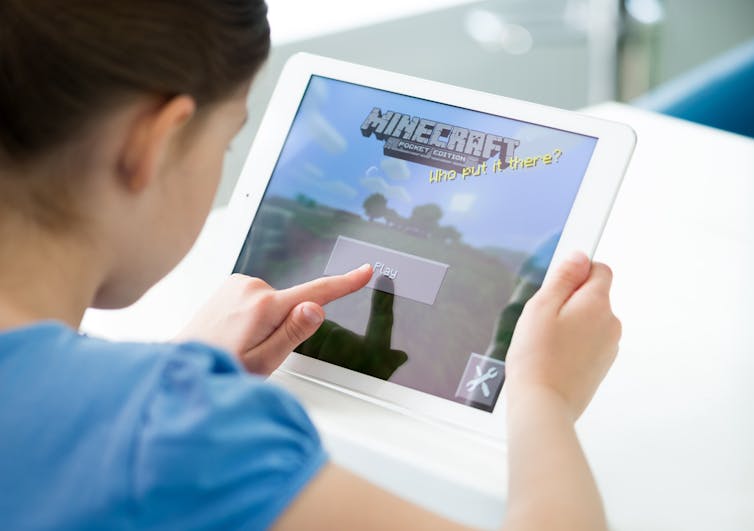
07 Apr Digital toys for kids you don’t have to feel guilty about
Guilt has perhaps always been part of selecting and giving gifts for children, write Kate Renshaw and Judi Parson.
However, in 2021, after two years of increased screen time for children thanks to COVID, parents may be experiencing even more uncertainty around what to buy.
But what if the power of play could counter some of these fears?
The importance of play is well recognised. Play holds developmental power to facilitate communication, increase personal strengths, foster emotional well-being and enhance social relationships.
This can be true of digital gifts as well as more traditional presents. Here are some ideas for screen-based toys that are good for both a child’s development and easing parental guilt.
Screen time – is there such a thing as too much?
Firstly, let’s address the key concern many parents have: can too much screen time harm a child’s development? The answer lies in knowing and balancing the risks and benefits of screen time.
A recent University of Colorado Boulder study of nine and ten year-olds found even when kids spend five hours a day on screens, “it doesn’t appear to be harmful”. The study also suggests screen time can improve social relationships.
While parents should make sure their children are using screens in appropriate ways, our early research suggests lengthy time on screen is not likely to yield dire consequences.
Research also indicates the type of screen time is important. This suggests active engagement (such as playing a game or doing an activity) may be beneficial, whereas prolonged periods of passive screen time (such as watching TV or YouTube) could be detrimental.
There are international and Australian recommendations on how much screen time is suitable for children, which vary depending on age.

www.shutterstock.com
Guidelines also advise negotiating clear boundaries for screen time, limiting sedentary screen time, and incorporating physical activity and social relationships.
For children, this may mean sharing a family device, having clear boundaries about usage and a parent supervising.
Ultimately, screens are a part of modern life – children need to learn how to navigate them. Modelling healthy screen time as well as selecting developmentally appropriate digital toys or platforms for play are two ways parents can assist children in developing a healthy relationship with screen time.
Digital toys across age groups
Babies and toddlers
Video-chatting is the only recommended form of screen time for babies and toddlers. Digital devices and apps may assist parents when used together with their baby or toddler, to maintain relationships with friends and family.
Apps on a parent’s device, such as Baby Karaoke can help parents to remember and sing along to nursery rhymes and children’s songs. Joining together with your child in playful rhythm and rhyme time in the first 1,000 days supports many aspects of brain development.
Pre-schoolers (3-5 years)
Screen time, when supervised by a parent and part of a balanced healthy family lifestyle, can support children’s developing imagination, creativity, and storytelling.
Apps and digital games like Osmo, where players use objects in the real world to interact with the digital world on their device, can develop communication, social and problem-solving skills.
School-age (5-9 years)
Apps and digital games that support learning, social skills and creativity are recommended for school-age children.
App ideas include Stop Motion, where children use physical toys such as Lego minifigures or plasticine models to create short animated movies. Khan Academy for Kids allows children to read books, create and draw, solve puzzles and play games that promote social skills.
Pre-teens (9-12 years)
Pre-teens may be starting to conduct a significant part of their social life online. Supporting their developing sense of digital citizenship is a crucial step and should be considered when choosing digital gifts.

www.shutterstock.com
So, digital games that promote learning, hold positive messages, and allow for a sense of achievement are recommended for pre-teens. As a parent of two pre-teens, Kate shares that two current favourite apps in her house are the drawing/art app Procreate and the meditation, ambient sounds and bedtime stories app Calm.
Other ideas include learning a new skill like a musical instrument with apps like Simply Piano or Simply Guitar. Heads Up! allows you to play charades online, while popular video game Minecraft promotes creativity. Finally, work together as a family to remember, preserve and write family stories using Story Corps.
Teenagers (13-18 years)
Screen time can be included in the healthy lifestyle of teenagers. Digital activities that foster interests and hobbies, and enhance social connections are an important consideration for development, health, and well-being.
As a parent of a teenager, Judi shares that the current favourite at her house is the virtual reality headset Oculus Quest 2, which enables social connection through VRChat, Altspace and meditation with TRIPP and Nature Treks .
Other ideas include getting out in nature for a family treasure hunt adventure using Geocaching . Or host a trivia party with family or friends using Sporcle. Games like Spore allow players to design their own species by evolving microscopic organisms into their own creations.
What to bear in mind
If you’re doing your own searches, use terms like “creative apps for preschoolers” and use a review site like Common Sense Media to check your choice. And consider physically active screen time choices.
Examples include the Nintendo Switch that promote physical activity such as dancing (Just Dance) or real-life exercises, including jogging and yoga (Ring Fit Adventure).

www.shutterstock.com
There is also virtual reality, which enables enjoyment, exploration and experiencing through multi-modes including movement (Beat Saber), art-making (Tilt Brush), and immersive experiences (Wander).
So, pause for a moment when considering digital gifts for children and ask yourself three things:
- Is there a physical component?
- Will this gift be used together within a relationship?
- What is the play value?

Kate Renshaw, Lecturer in Play Therapy, Deakin University and Judi Parson, Senior Lecturer, Child Play Therapy, Deakin University
Main Image: www.shutterstock.com
This article is republished from The Conversation under a Creative Commons license. Read the original article.

